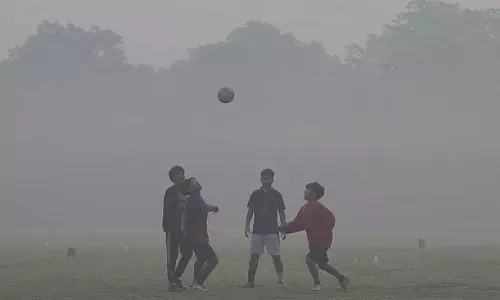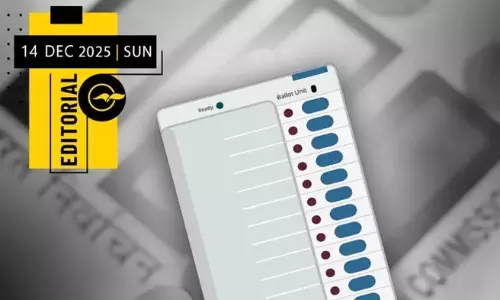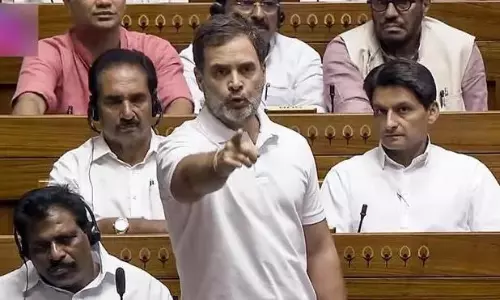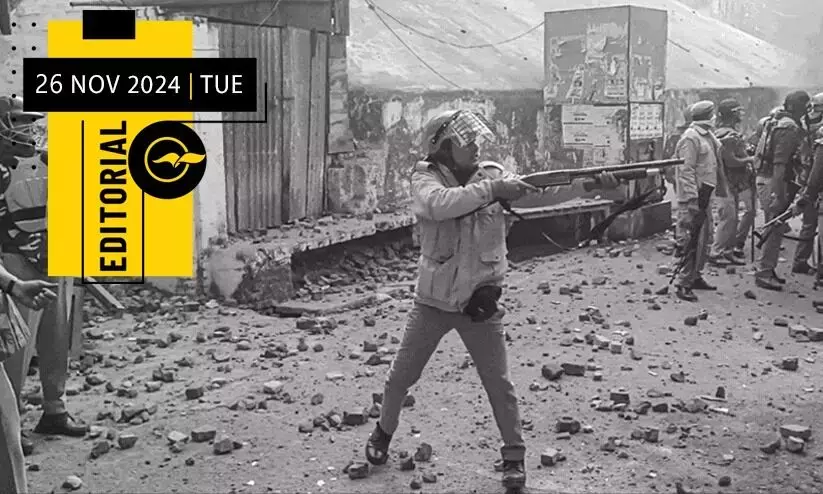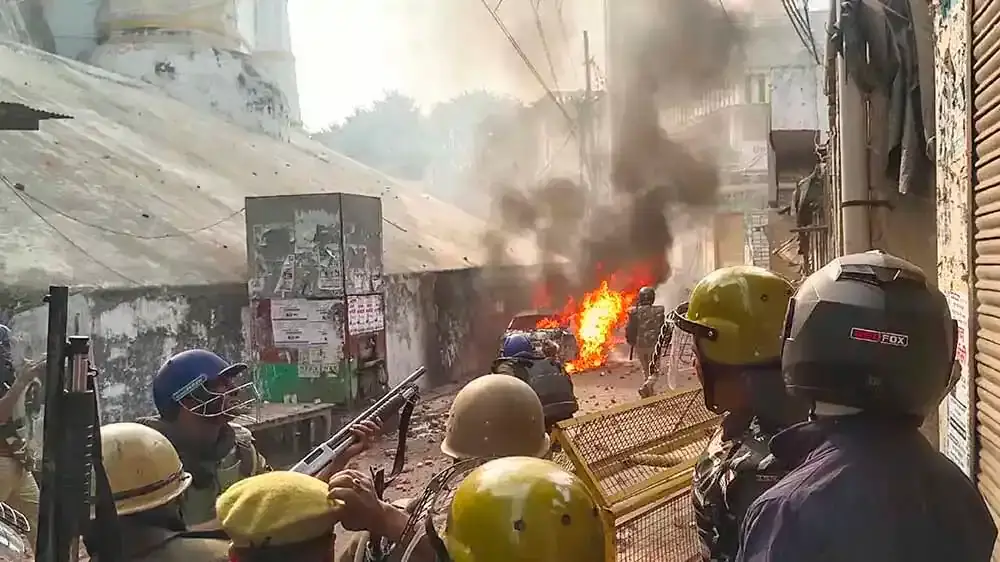
Sambhal is a new beginning
text_fieldsIn Sambhal district of Uttar Pradesh, the authorities' repeated attempt to conduct a survey on the strength of a court order at the Shahi Jama Masjid in Chandausi city resulted in a major disaster, leading to the death of five people, injuries to many, including police officers, and extensive damage to property worth lakhs of rupees. It is alleged that in 1529 AD, during the reign of Mughal Emperor Babur, the Shahi Jama Masjid was built by demolishing the Harihar Kshetra. To prove this, a petition was filed by a Sangh Parivar leader and lawyer, requesting a survey to be conducted in the mosque and its surroundings. On November 19, Senior Division Civil Court Judge of Sambhal, Aditya Singh, passed order granting that. Based on the petition submitted that same afternoon, within hours, the judge issued an order to the Commissioner to conduct a preliminary survey and submit a report by November 29. The court passed this swift judgment without even serving a notice to the opposing party or hearing them. On the same day the ruling was issued, a two-hour survey was conducted at the mosque under the leadership of the Commissioner. At 7 AM on Sunday, a six-member team led by the Commissioner arrived again, without prior notice, accompanied by the police and the media. Members of the Sangh Parivar followed the officials, chanting 'Jai Shree Ram.' Upon hearing about it, the worshippers gathered at the mosque premises and raised protests. As the crowd grew, the police resorted to baton charges and used tear gas. The crowd threw stones at the police. Without any warning, the police opened fire, resulting in the death of five young men. Local media reports indicate that the police, who had imposed an internet ban in the area, raided Muslim homes and arrested about thirty young men.
Under the Ancient Monuments Preservation Act of 1904, the Shahi Jama Masjid in Sambhal was notified as a protected monument on December 22, 1920. The Archaeological Survey of India (ASI) recognized the mosque as a national monument. However, Sangh Parivar followers filed eight unjust petitions in the Sambhal court, alleging that the Jama Masjid Committee unlawfully seized the land of Sri Harihar Kshetra, dedicated to the Kalki incarnation, located in the heart of Sambhal city. Among the petitioners is Advocate Harishankar Jain, who had previously filed a case against the Gyanvapi mosque. The petitioners argue that Harihar Kshetra in Sambhal, dedicated to the Dashavatara Kalki incarnation, was partially destroyed during Babur's time, with the remaining parts taken over by Muslims and turned into a mosque. It is the order issued by the court for a survey to determine the validity of these claims that has now paved the way for disaster.
The Babri experience must not be repeated in a secular democratic India; and that was to ensure that the Places of Worship (Special Provisions) Act in 1991, was passed in the year before the demolition of Babri Masjid. This law mandated that places of worship should remain as they were on August 15, 1947, the day of India’s independence, and that no other religious group should stake claims or alter their ownership. After the demolition of Babri Masjid, when Hindu extremists were digging up controversies over historic mosques and monuments, this legislation brought significant relief to the country. In 1994, the Supreme Court reinforced this law while delivering a verdict in a case, stating that history and its errors could be used as tools to reconcile the present and future. In the 2019 ruling, the Supreme Court granted the Babri Masjid site to build the Ram temple and in this verdict too, emphasized the importance of safeguarding this law.
However, with the Ram temple having been built at the Babri Masjid site, the Sangh Parivar, realizing that the 1991 law was a hindrance to demolition of other mosques, began to approach the court. During Modi’s second term in the Centre, BJP leader Ashwini Kumar Upadhyay and others approached the Supreme Court against the law. A two-judge bench, including then Chief Justice S.A. Bobde, accepted the petition and issued a notice to the Central government in March 2021, seeking its opinion. Even after issuing six more notices, there was no response from the Centre. Following this, in August 2021, a petition was filed in the Varanasi Civil Court seeking permission to pray at the Gyanvapi Masjid. In response, the mosque maintenance committee approached the Supreme Court.
The Supreme Court, which initially granted an interim stay on the survey, directed the case to be approached in the High Court. The High Court, after rejecting the petition, allowed the scientific survey to proceed. Even when the matter reached the Supreme Court again, the court refused to intervene to halt the survey. Furthermore, the former Chief Justice D.Y. Chandrachud, who had been on the Ayodhya bench, orally upheld the Allahabad High Court's decision that had endorsed the survey, surpassing the earlier verdict upholding the 1991 law. Thereafter, it has been observed that the lower courts were moving towards the decision to refer any unjust claim to a survey. The first experiment in this regard was the occurrence in Sambhal. And in the time of the Sangh rule, it looks unlikely that it will be prevented from being repeated in other parts of the country. The future of India depends on whether those outside the Sangh Parivar, including the opposition, can approach the issue with the seriousness it deserves and find resolutions.




